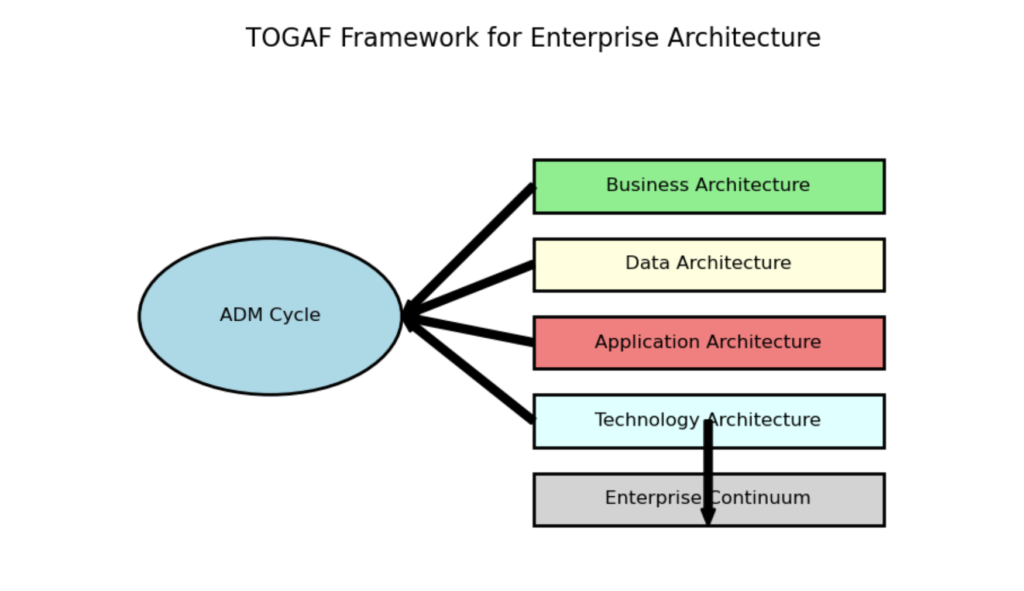-
A Framework for Enterprise Architecture
- Posted on: June 2, 2025
- by: Anand Pandey
- 0 Comments
In a world where technology and business are deeply intertwined, organizations need a structured approach to align their IT capabilities with strategic goals. That’s where TOGAF (The Open Group Architecture Framework) comes in—a comprehensive framework for designing, planning, implementing, and governing enterprise architecture.
🧱 What is TOGAF?
TOGAF is a globally recognized framework that provides a methodology and set of tools for developing enterprise architecture. It helps organizations manage complexity, improve decision-making, and ensure that IT investments support business outcomes.
At its core, TOGAF is built around the Architecture Development Method (ADM)—a step-by-step approach to developing and managing enterprise architecture.
🧩 Key Components of the TOGAF Framework
1. Architecture Development Method (ADM)
The ADM is the heart of TOGAF. It provides a structured cycle for developing architecture, from vision to implementation and governance.
2. Architecture Domains
TOGAF divides enterprise architecture into four domains:
- Business Architecture – Defines business strategy, governance, and processes.
- Data Architecture – Structures data assets and data management.
- Application Architecture – Describes individual applications and their interactions.
- Technology Architecture – Details the infrastructure and technology stack.
3. Enterprise Continuum
This is a classification model that helps organize and reuse architectural assets across the enterprise—from generic foundation architectures to specific organizational solutions.
🖼 Visualizing the TOGAF Framework
Here’s a visual diagram that illustrates how the ADM cycle connects with the architecture domains and the Enterprise Continuum:

✅ Real-World Example
Imagine a national education board planning a digital transformation:
- The ADM cycle guides the process from defining the vision to deploying new systems.
- The Business Architecture defines goals like improving student access and digital learning.
- The Data Architecture structures student records, performance metrics, and learning content.
- The Application Architecture includes learning management systems and mobile apps.
- The Technology Architecture covers cloud infrastructure, security, and device management.
- The Enterprise Continuum helps reuse proven models and adapt them to the education sector.
📝 Summary
The TOGAF framework offers a powerful, structured approach to enterprise architecture. By combining the ADM cycle, architecture domains, and the Enterprise Continuum, TOGAF helps organizations align technology with strategy, reduce complexity, and drive innovation. Whether you’re modernizing legacy systems or launching new digital initiatives, TOGAF provides the blueprint for success.
Tag